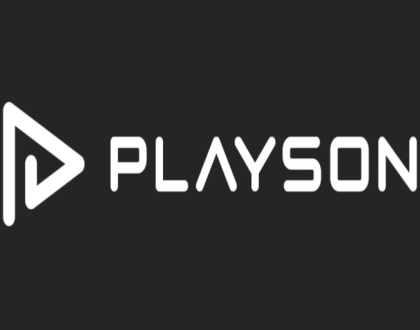The Tug of War Between Regulation and Innovation

A tug of war exists in business between regulation and innovation, each imperative in its own right yet seemingly at odds. While regulation aims to protect consumers, ensure fair competition, and maintain ethical standards, it can also stifle creativity, slow progress, and limit market potential. On the other hand, innovation drives growth, fosters technological advancements, and spurs economic prosperity. However, unbridled innovation can lead to unethical practices, unchecked monopolies, and potential harm to society. This dynamic interplay between the need for regulation and the drive for innovation is a critical balancing act that shapes the business landscape.
Historical Perspective on Regulation and Innovation
Early Industrialization and Regulatory Response
For centuries, innovation has been the driving force behind progress and economic growth. The early days of industrialization saw the birth of numerous technological advancements that revolutionized various industries. However, this rapid evolution also brought about challenges, particularly in terms of worker safety, environmental impact, and fair labor practices.
An increase in industrial accidents and hazardous working conditions prompted governments to intervene and introduce regulations to protect workers. The establishment of labor laws, factory safety standards, and environmental regulations marked the beginning of a tug of war between innovation and regulation, as businesses sought to balance growth with compliance.
Technological Advancements in the 20th Century
With the dawn of the 20th century came a wave of unprecedented technological advancements that transformed the world. The development of automobiles, airplanes, telephones, and electricity revolutionized communication, transportation, and daily life. These innovations not only improved efficiency and convenience but also posed new challenges in terms of safety, privacy, and regulation.
Perspective: The 20th century witnessed a remarkable blend of groundbreaking inventions and the need for regulatory frameworks to ensure public safety and ethical use of technology. Striking a balance between fostering innovation and safeguarding societal interests continues to be a central theme in the ongoing tug of war between regulation and innovation.
The Nature of Innovation
There’s a constant tug of war between regulation and innovation in any industry. Innovation drives progress and growth, while regulation aims to ensure stability and protection for consumers. In this chapter, we will probe deeper into the nature of innovation, exploring its definition, types, and lifecycle.
Definition and Types of Innovation
Definition and types of innovation are necessary to understanding the landscape of modern business. Innovation is the process of introducing new ideas, products, services, or ways of doing things. It can be incremental, where existing products are improved, or disruptive, which creates a significant shift in the market. Any successful business today needs to embrace innovation to stay relevant and competitive.
- Definition: Introducing new ideas, products, services, ways of doing things
- Types :
- Incremental Innovation: Improving existing products
- Disruptive Innovation: Creating significant market shifts
- Key Takeaway: Embracing innovation is crucial for business success.
The Lifecycle of Innovation
Innovation follows a lifecycle from ideation to commercialization. Understanding this process can help businesses navigate challenges and capitalize on opportunities. Another critical aspect of the lifecycle of innovation is the need for continuous improvement and adaptation. Innovations that fail to evolve with changing trends or consumer needs risk becoming obsolete.
| Definition | Introducing new ideas, products, services, ways of doing things |
| Types | – Incremental Innovation: Improving existing products – Disruptive Innovation: Creating significant market shifts |
| Key Takeaway | Embracing innovation is crucial for business success. |
| Lifecycle of Innovation | From ideation to commercialization, continuous improvement is vital. |
Understanding Regulation
Once again, it is crucial to understand the role of regulation in influencing industries and innovation. Regulation refers to the rules and directives established by governments or other regulatory bodies that organizations must follow to ensure compliance.
Purposes of Regulatory Frameworks
Understanding the purposes of regulatory frameworks is crucial in appreciating their importance. These frameworks are designed to protect consumers, ensure fair competition, promote public safety, and safeguard the environment. By setting standards and guidelines, regulatory frameworks help maintain order and integrity within various industries.
Impact of Over-Regulation on Industries
Regulation plays a crucial role in shaping industries, but over-regulation can stifle innovation and hinder growth. When industries face excessive regulatory burdens, they may struggle to adapt to changing market dynamics and technological advancements, ultimately impeding progress. Over-regulation can lead to increased operational costs, reduced efficiency, and decreased competitiveness for businesses.
It is imperative for regulatory bodies to strike a balance between establishing necessary guidelines and allowing room for flexibility and innovation within industries. By finding a middle ground, regulations can support growth and development while still ensuring compliance and ethical practices.
Current Regulatory Challenges
Now, as technology advances at a rapid pace, regulatory bodies worldwide are facing numerous challenges in balancing the need for innovation and growth with the protection of consumers, society, and the environment. The evolution of various industries, such as finance, healthcare, and transportation, has led to the emergence of new regulatory challenges that require immediate attention and action.
Privacy and Data Protection
An increasing concern in today’s digital age is the protection of privacy and data. With the vast amount of personal information being collected, stored, and shared online, there is a growing need for stringent regulations to safeguard individuals’ privacy rights. Instances of data breaches and misuse have raised alarm bells globally, prompting regulators to enforce stricter measures to hold companies accountable for the protection of sensitive data.
Environmental Concerns and Sustainability Targets
Protection of the environment and meeting sustainability targets are at the forefront of regulatory challenges in various industries. With the escalating threat of climate change and resource depletion, regulators are under pressure to implement policies that promote eco-friendly practices and reduce carbon emissions. Businesses are being urged to adopt sustainable measures to mitigate their environmental impact and contribute to a greener future.
With the global focus shifting towards sustainability, it is crucial for regulatory bodies to collaborate with industries to set clear guidelines and standards. Adherence to environmental regulations is not only a legal requirement, but it also signifies a commitment to responsible corporate citizenship and long-term environmental preservation.
Financial Regulations and Fintech Innovations
TargetsConsistent advancements in financial technology have challenged traditional regulatory frameworks, paving the way for innovative solutions and services. Fintech companies are revolutionizing the way financial transactions are conducted, offering greater convenience and accessibility to consumers worldwide. However, this rapid evolution has posed intricate regulatory challenges for supervisory authorities striving to maintain financial stability and consumer protection.
RegulatoryAdapting to the dynamic landscape of fintech innovations requires a balance between fostering innovation and ensuring compliance with existing financial regulations. Regulatory bodies are tasked with developing agile regulatory frameworks that both encourage technological advancement and safeguard the financial system from potential risks and vulnerabilities.
Intellectual Property and Patent Law
The protection of intellectual property rights is crucial for fostering innovation and creativity across industries. The enforcement of patent laws and regulations is critical in safeguarding inventors’ rights and promoting fair competition. Intellectual property protection encourages businesses to invest in research and development, knowing that their innovations are secure from replication or misuse.
To uphold the integrity of intellectual property rights, regulatory bodies must continually adapt to the changing technological landscape and address emerging challenges such as patent infringement and intellectual property theft. Striking a balance between protecting innovators’ rights and fostering healthy market competition is paramount for sustainable growth and innovation.
The Catalysts of Regulatory Evolution
Adaptation to New Technologies
To keep up with the rapid pace of technological advancements, regulations must continuously adapt and evolve. Not doing so can lead to gaps in oversight, leaving room for potential risks and challenges to go unchecked. Regulatory bodies are challenged to stay ahead of the curve, understanding the intricacies of emerging technologies to ensure the safety and security of the public.
The Role of Public Opinion and Social Change
Technologies often outpace the development of regulations, leading to public concerns and calls for change. Social media and widespread connectivity have empowered individuals to voice their opinions and demand accountability from both innovators and regulators. This has put pressure on regulatory bodies to adapt quickly and efficiently, balancing the need for innovation with public safety.
Understanding the shifting tides of public opinion and societal values is crucial for regulatory evolution. As attitudes towards issues like data privacy and environmental sustainability evolve, regulators must be responsive to these changes. Regulatory frameworks that fail to consider changing social norms risk becoming obsolete and ineffective in addressing current challenges.
International Standards and Globalization
Social and technological advancements have increasingly blurred the boundaries between nations, necessitating a harmonization of regulations on a global scale. Role of international standards becomes pivotal in ensuring consistency and interoperability across borders. Collaboration among countries and regulatory bodies is imperative to address cross-border issues such as cybersecurity threats and trade regulations.
Synergizing Regulation with Innovation
Strategies for Fostering Innovation within Regulatory Boundaries
Innovation within regulatory boundaries can be a delicate balance, but it is crucial for progress in a rapidly evolving world. Organizations can foster innovation by creating a culture that values experimentation and creative thinking. By encouraging a mindset that embraces change and continuous improvement, companies can navigate regulatory challenges while still driving innovation.
Policy Design and the Agile Regulatory Approach
Innovation is at the heart of progress, but it must coexist with regulations to ensure safety, security, and social responsibility. The agile regulatory approach involves designing policies that are flexible and adapt to the changing landscape of technology and markets. By incorporating feedback loops and mechanisms for continuous assessment, regulators can keep pace with innovative developments while upholding necessary standards.
Policy Design and the Agile Regulatory Approach: This section investigates into how regulators can adopt an agile approach to policy design, allowing for faster responses to emerging technologies and business models. It explores the importance of iterative processes in regulatory frameworks and the need for constant communication between regulators and industry stakeholders.
Collaborative Efforts Between Regulators and Innovators
Within regulation and innovation, collaboration is key to driving progress. Regulators and innovators can work together to establish common goals and frameworks that support both compliance and creative freedom. By fostering open communication channels and engaging in constructive dialogue, regulatory bodies can better understand the needs of innovators and adapt regulations accordingly.
Collaborative Efforts Between Regulators and Innovators: This section emphasizes the importance of building trust and partnerships between regulators and innovators to create a conducive environment for innovation. It discusses the benefits of knowledge sharing and co-creation processes in shaping effective regulatory policies that encourage innovation while ensuring public interest.
Future Pathways
Predicting the Interplay of Regulation and Innovation
To navigate the evolving landscape of technology and policy, it is crucial to anticipate how regulation and innovation will continue to interact in the future. Therelationship between regulation and innovation can be complex and dynamic, with each side influencing and responding to the other in various ways. In the coming years, it is anticipated that regulations may become stricter in certain areas to address concerns around data privacy and security, while simultaneously opening up new opportunity spaces for innovation in sustainable technologies and digital healthcare.
Opportunities for Harmonization
Pathways forharmonization can provide a way for policymakers and innovators to come together to develop regulations that both protect consumers and foster innovation. For instance, establishing global standards for data protection and cybersecurity can help streamline compliance for businesses operating across borders, fostering a more seamless and efficient environment for innovation to thrive.
To wrap up
Following this discussion on the tug of war between regulation and innovation, it is evident that finding the right balance is vital for the progress of society. Regulations are necessary to protect consumers, ensure fair competition, and maintain order in markets. However, overly strict regulations can stifle innovation, hindering advancements that could benefit society as a whole.
In this rapidly changing technological landscape, policymakers and industry leaders must work together to create a regulatory framework that fosters innovation while safeguarding the interests of the public. It is crucial to adapt regulations to keep pace with advancements in technology, promoting a dynamic environment that encourages creativity and growth while ensuring responsibility and accountability. By striking a balance between regulation and innovation, we can create a sustainable ecosystem that not only drives progress but also addresses ethical and societal concerns.
FAQs:
What is the role of regulation in business innovation?
Regulation plays a crucial role in ensuring consumer protection, fair competition, and ethical standards while also fostering innovation.
How does over-regulation affect business growth?
Over-regulation can stifle creativity, increase operational costs, and hinder adaptability to market changes, ultimately impeding business growth.
Why is finding a balance between regulation and innovation important?
Striking a balance ensures that businesses can innovate while still adhering to necessary standards, promoting both progress and ethical practices.
What are some current regulatory challenges facing industries?
Current challenges include privacy and data protection, environmental sustainability, fintech innovations, and intellectual property rights.
How can regulators and innovators collaborate to foster innovation responsibly?
Collaboration involves establishing common goals, open communication, and flexible regulatory frameworks that support both compliance and creative freedom.
Recommended Posts

Regulatory Impact on Online Gambling Future
May 16, 2024

Consumer Protection in Online Casinos
May 16, 2024

Playson Earns ISO/IEC 27001:2022 Certification
May 16, 2024




